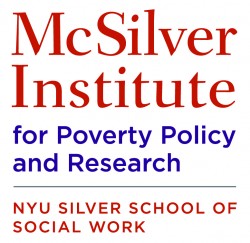The national conversation around student loan debts reached a peak last week as Obama signed an executive order capping student loan repayments at ten percent of one’s income. Additionally, the Senate voted against Senator Elizabeth Warren’s student loan bill, the Bank on Students Emergency Loan Refinancing Act, which proposed allowing people to refinance their college loans to a rate of 3.86 percent. Although the Obama administration supported this bill, stating that it would help an estimated 25 million people save up to $2,000 each on their student loans, this bill’s proposal to raise taxes in order to cover the $51 billion cost may have lost some support because of the timing during an election year. The proposed tax would have imposed a 30 percent tax minimum for those with an income upward of $1 million.
 Senate Republicans in particular responded to Warren’s bill with disapproval. Most notably, Senate Minority Leader Mitch McConnell and Senator Lamar Alexander spoke out against the bill, arguing that this proposed refinancing of student loans would neither help relieve the economic burden of student loans nor decrease the rising cost of a college education. Conservative media outlets such as Fox News have accused Obama and Warren’s actions of having a politically motivated agenda to boost Democrats’ approval for the upcoming 2014 midterm elections.
Senate Republicans in particular responded to Warren’s bill with disapproval. Most notably, Senate Minority Leader Mitch McConnell and Senator Lamar Alexander spoke out against the bill, arguing that this proposed refinancing of student loans would neither help relieve the economic burden of student loans nor decrease the rising cost of a college education. Conservative media outlets such as Fox News have accused Obama and Warren’s actions of having a politically motivated agenda to boost Democrats’ approval for the upcoming 2014 midterm elections.
Student loan debt, an astronomical $1 trillion across the U.S. economy, disproportionately affects low-income college students, especially those who lack the option to attend public and non-profit universities. An increasing number of young people living in poverty are attending for-profit universities and are forced to take out student loans to cover tuition costs. The Obama administration, in its critique of the for-profit university sector’s loose tuition regulations, highlighted that for-profit universities account for 13 percent of the college student population, but its students comprise nearly half of those with college loan defaults, demonstrating the disproportionate impact of student loans on students living in poverty. Obama’s action to alleviate the burden of student loans will help positively impact low-income students and make a college education more accessible and affordable.
Providers that have high school aged youth focused programs should be prepared to answer student’s questions about the costs and benefits of attending college, and particularly in response to the rising prevalence of for-profit schools that have targeted lower-income populations steering them toward loans that for many has become insurmountable debt.
Courtesy of McSilver Institute of Poverty Policy and Research who has kindly given SJS permission to syndicate this piece.
Disclaimer: The views and opinions expressed in the Policy News Briefs are not necessarily the views of the McSilver Institute for Poverty Policy and Research or NYU’s Silver School of Social Work. If you have comments or suggestions about this service, contact us at info@mcsilver.org.
Sources:
Our authors want to hear from you! Click to leave a comment
Related Posts



